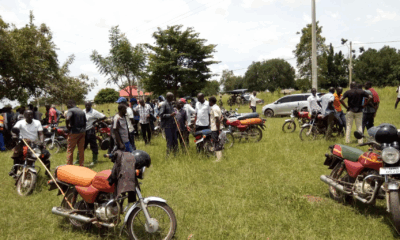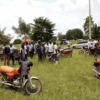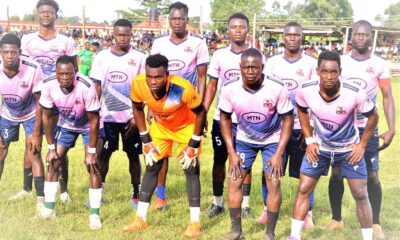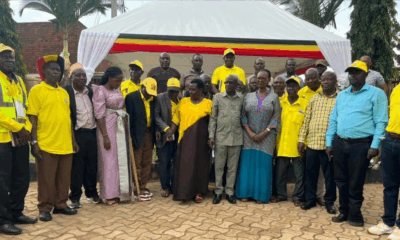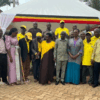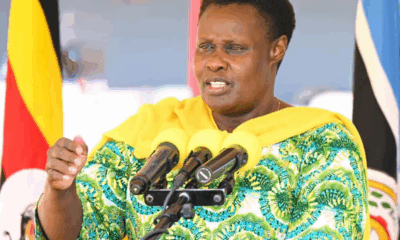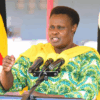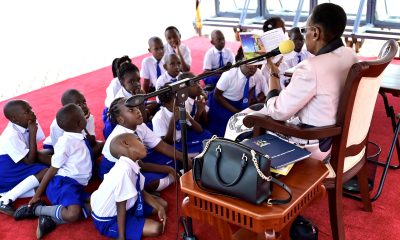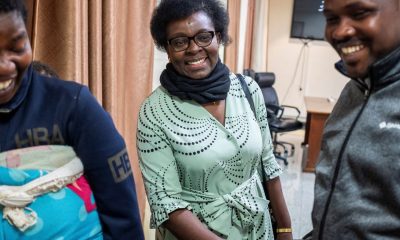News
We shall not raise water tariff – NWSC
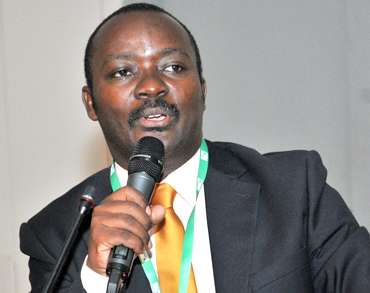
silver mugisha managing director nwsc
Users of water from the publicly owned National Water and Sewerage Corporation (NWSC) should breathe with a sigh of relief after revelations by officials of the water utility that they do not plan to raise the water tariff at least in the next 10 years.
The management also made undertakings to assure the public that it has robust plans to bring an end to recent spells of dry water pipes or water shortages that has been a major complaint among their customers in many parts of Kampala and Wakiso over the past couple of months.
The assurances were made during NWSC’s inaugural Water Baraza – a face-to-face meeting between the management of the utility with its customers that was held in Kampala last week.
Officials said that the water utility is implementing a range of projects including increasing the capacity of water treatment plants in Ggaba, the infrastructure is going to be up to date. We are going to have more customers coming on board, we are going to generate savings.
Edward Ssekabanja, the former RDC of Kawempe perhaps summed up the feelings of many customers who turned up when he thanked the corporation for supplying water to people at affordable rates, unlike other utilities that have kept consumers on tenterhooks with their constant demands for higher tariffs.
Dry pipes still an issue
A number of consumers especially from Wakiso and other outlying areas of Kampala expressed concern over unreliable supply of water. In response, the NWSC management assured them that normal supply will be restored with completion of the Ggaba water and sanitation project that is expected to be completed in 18 months time.
The manager for Audit John Akanyijuka further revealed the organisation’s plans to build several water reservoirs around Wakiso and Mukono to solve the problem of water shortages. Some of the areas earmarked to have reservoirs include Namasuba, Lugoba hill among other areas in the outskirts of Kampala.
The Minister of Water Prof. Ephraim Kamuntu hailed the management of NWSC for organising the Baraza as a form of accountability. He also congratulated the managers of the utility for successfully steering the corporation from a loss making entity to profitability. NWSC is the only government owned utility provider that weathered the era of privatisation. The organisation has expanded its services now to 66% of all Uganda’s major towns.
NWSC in conjunction with the Directorate of Water Development have received plaudits for extending supply of safe clean water to up 75% of Ugandans, putting Uganda among the countries that are likely to meet the UN Millennium Development Goals by 2015.
Kamuntu however expressed concern for the still high number – about 11 million Ugandans especially in rural areas who walk more than 200 metres to fetch water.
Kamuntu also challenged men who are the principle planners of home construction in Uganda to include water harvesting as a central part of their building plans not just to end the suffering of their wives and children who spend lots of time fetching water but also as a means to increase their productivity.
“The centrality of water to our lives is often taken for granted. Some people use piped water for washing their cars or watering flowers.
Foul smell
While NWSC received praises for extending water, it got sticks for failing to expand or even properly maintain the sewerage system in Kampala that resulted into unsightly scenes of sewerage overflow and stench especially during heavy downpours.
In response however, NWSC manager in charge of planning Johnson Amayo said they have plans to expand the sewerage system in Kololo and the Central business district by 100 percent.
He blamed poor planning of the city for some of the bursts in the sewerage pipes.
Outside Kololo and Kampala central, Amayo said, sewerage will only be collected and treated at any of the four sewerage plants that have been earmarked around Kampala.
Construction of the first sewerage treatment plant has been completed in Lubigi swamp and will be able to handle up to 53 million litres of waste. Apart from treating waste, the plant will generate electricity to power it as well as sell part of it to the grid.
Three other big waste treatment plants are planned for Nalukolongo, Nakawa and Kinawataka.
Amayo emphasised that NWSC does not plan to extend piped sewerage to areas outside Kampala central and Kololo. Instead, he urged people to on-site sanitation facilities like septic tanks.
Comments



